How to Monetize Your Website in 2025? | A Guide for Publishers
Looking to unlock the revenue potential of your website? You’re in the right place! Whether you’re a new publisher or an experienced one, sustainable website monetization is key to long-term success.
In this article, we’ll explore proven strategies and actionable tips to help you boost your earnings and diversify your income streams.
Website Monetization in 2025: What’s Changed and Why It Matters?
Website monetization has undergone significant transformation, driven by advancements in technology and shifts in user behavior. Most recent data shows that approximately 3,992,222 websites are created every day, 2,772 websites are created every minute, and 46 websites are created every second.
Clearly, the competition for attention and revenue has never been fiercer. As a result, website owners must adopt diverse and innovative strategies to stay profitable.
So, what’s new in 2025?
- Data monetization has emerged as a growing trend, allowing website owners to generate revenue by leveraging anonymized user data. Websites partner with data platforms to sell insights on user behavior, preferences, and trends, providing valuable data to advertisers and marketers without compromising user privacy.
- Another trend gaining traction is dynamic pricing models, where website owners can adjust pricing based on user behavior, demographics, or even real-time demand.
- Lastly, the focus on sustainable monetization is increasing, with more emphasis on balancing ad load and user experience. Overloading websites with ads can negatively affect user retention and engagement, leading many to adopt native ads and lighter ad formats that blend seamlessly with content.
These are just a few of the emerging trends, and in such a fast-paced environment, even more are on the horizon. As a publisher, it’s crucial to stay informed about the latest developments in website monetization.
To successfully monetize your content, you need to be aware of the most effective strategies. Let’s dive deeper into the trending monetization methods of 2025 and explore how you can capitalize on them for maximum revenue.
Getting Your Website Ready for Monetization
Building a solid website for monetization success
First, let’s get yourwebsite ready. It’s unsurprising that a website isn’t a cash machine running on autopilot. To earn a profit, you need to invest time and often money into the following key areas:
- Setting up your website.
- Creating valuable content.
- Optimizing for SEO.
- Building a social media presence.
- Growing your email list.
- Cultivating a devoted readership.
Once you’ve laid this foundation, you can get to the fun part–website monetization.
Selecting the right niche for high-profit potential
Choosing the right niche is critical to your success. In 2025, competition is fiercer than ever, so it’s important to pick a niche that balances profitability with your interests and expertise. While high-profit niches like finance, health, and tech tend to be competitive, sub-niches can offer less competition and a more targeted audience.
- For example, within the health niche, you could focus on mental wellness for remote workers. The key is finding a niche that aligns with your passion while addressing a specific audience’s needs.
Monetization works best when you consistently create value for your audience and optimize your site over time. Patience and continuous improvement will help you reap the most rewards in the long run.
Here’s a list of the top high-profit niches in 2025 and their possible sub-niches:
| High-profit niches | Possible sub-niches |
| Make money online | ‣ Passive income strategies (e.g., affiliate marketing) ‣ Freelancing skills (e.g., web development) ‣ Content creation (e.g., YouTube channels) |
| Finance | ‣ Personal finance (e.g., finance for Gen Z) ‣ Investing (e.g., strategies for investing in various assets) ‣ Frugal living (e.g., reducing expenses) |
| Travel | ‣ Adventure travel (e.g., hiking) ‣ Budget travel (e.g., backpacking) ‣ Family travel (e.g., kid-friendly destinations) |
| Fitness | ‣ Weight loss (e.g., tips for weight loss) ‣ Nutrition (e.g., sports nutrition) ‣ Home workouts (e.g., convenient exercise routines) |
| Personal development | ‣ Productivity hacks (e.g., overcoming procrastination) ‣ Confidence & communication (e.g., public speaking) ‣ Career development (e.g., interview skills) |
| Relationships | ‣ Relationship advice for specific demographics (e.g., young couples, married people) ‣ Long-distance relationships (e.g., advice on maintaining a solid connection) |
| Fashion & lifestyle | ‣ Minimalist fashion (e.g., tips on creating a capsule wardrobe) ‣ Vintage fashion (e.g., styling vintage pieces) ‣ Budget fashion (e.g., cost-effective outfit combinations) |
| Real estate | ‣ Location-based real estate deals (e.g., specific neighborhood, city, or county) ‣ Specific property (e.g., vacation rentals) ‣ Client-based real estate (e.g., first-time homebuyers) |
| Technology | ‣ Product-specific niches (e.g., smartphones) ‣ Smart home & automation (e.g., review smart home devices) ‣ Photography (e.g., review cameras) |
| Food | ‣ Specific diets (e.g., allergy-friendly) ‣ Cooking methods (e.g., grilling) ‣ Baking & desserts (e.g., cakes) |
Importance of user experience (UX) and performance optimization
User experience is critical to any publisher’s website monetization strategy. UX affects users’ journey from the moment they discover your website in search. If the UX is bad, users will abandon your site. Plus, finding brands who want to advertise on it will be difficult.
The main thing to remember when thinking about UX is that users should be able to interact with your website easily, quickly, and seamlessly. If you monetize a website with ads, maintain a 30:70 ratio of ads to content.
Also, keep an eye on your website’s design because it can improve your user engagement.
Additionally, there’s on-page SEO–a practice of optimizing web pages to rank higher in search engines. It’s based on delivering the best and most relevant content to the user. On-page SEO optimization includes:
- Internal link integration
- Right keywords
- Readability
- HTML tags like titles and meta descriptions
- The content itself
If you want to monetize traffic, you need to nail on-page SEO. Your traffic will grow and become more attractive to users, which will help with your chosen monetization strategy.
Essential tools: Google Analytics, heatmaps, A/B testing platforms
To successfully monetize a website, it’s critical to track and analyze its performance regularly. The right tools can provide valuable insights into user behavior, traffic sources, content performance, and overall engagement–key factors in optimizing your site for better user experience and higher revenue.
Here are 4 tools that can help you gather and analyze this data.
- Google Analytics remains one of the most powerful tools for monitoring website performance. It provides comprehensive insights into user behavior, including traffic sources, user demographics and behavior, conversion tracking, real-time reporting, custom reports.
- SEMrush offers SEO and competitive analysis, helping you optimize content for better rankings and increased organic traffic.
- Heatmap tools (e.g., Hotjar, Crazy Egg) visually represent user behavior by showing where visitors click, scroll, or spend the most time on your web pages.
- A/B testing platforms like Optimizely and Google Optimize are crucial for refining your website’s design, content, and monetization strategy. These tools let you test different versions of a webpage to determine which performs better.
Getting more out of low traffic: monetizing small audiences
When it comes to website monetization, having a large audience isn’t the only path to success. Many content creators with smaller, highly engaged audiences are discovering effective ways to monetize by focusing on engagement over sheer traffic volume.
The key to maximizing your revenue, even with low traffic, lies in understanding the value of your audience and tapping into profitable micro-niches.
If your website attracts a dedicated, loyal readership (even if it’s small), you can leverage that engagement for monetization. Visitors who trust your content and feel connected to your brand are more likely to:
- Click on ads or affiliate links.
- Purchase products you recommend.
- Subscribe to premium content or services.
For example, a blog with 1,000 highly engaged readers can generate more income than one with 10,000 disinterested visitors. Thus, focus on fostering community, interaction, and meaningful conversations through personalized content, newsletters, and comments.
Leveraging micro-niches for profitable returns
Monetizing a smaller, dedicated audience in a micro-niche is often easier because the audience is more invested and willing to pay for specialized knowledge or products.
If you’d like to start working with micro-niches then we’ve gathered 4 tips to help you out:
- Remember, passion is key. Monetizing a small audience is easier if you’re genuinely passionate about your niche. Enthusiasm translates into high-quality content and fosters a sense of community.
- Perform a thorough research. Before diving into a niche, conduct thorough research to understand its competition, audience, and monetization potential.
- Focus on quality and differentiation. Stand out by offering unique, high-quality content that adds real value to your audience. Whether it’s in-depth guides, expert interviews, or curated resources, content differentiation is essential in a crowded market.
- Stay updated. Trends within micro-niches can evolve quickly. Stay up-to-date with developments in your niche and adapt your content accordingly.
Advertising Models: Traditional Meets Innovation
Display ads: what’s still working and what’s not?
Display ads continue to be a significant revenue source for many websites. However, to maximize effectiveness in 2025, let’s see what’s still working:
- Video ads, both in-stream and out-stream, are gaining even more traction as attention spans shorten and visual content takes precedence. Shorter, high-impact video ads (e.g., 6 second bumper ads) are particularly successful on mobile platforms and social media.
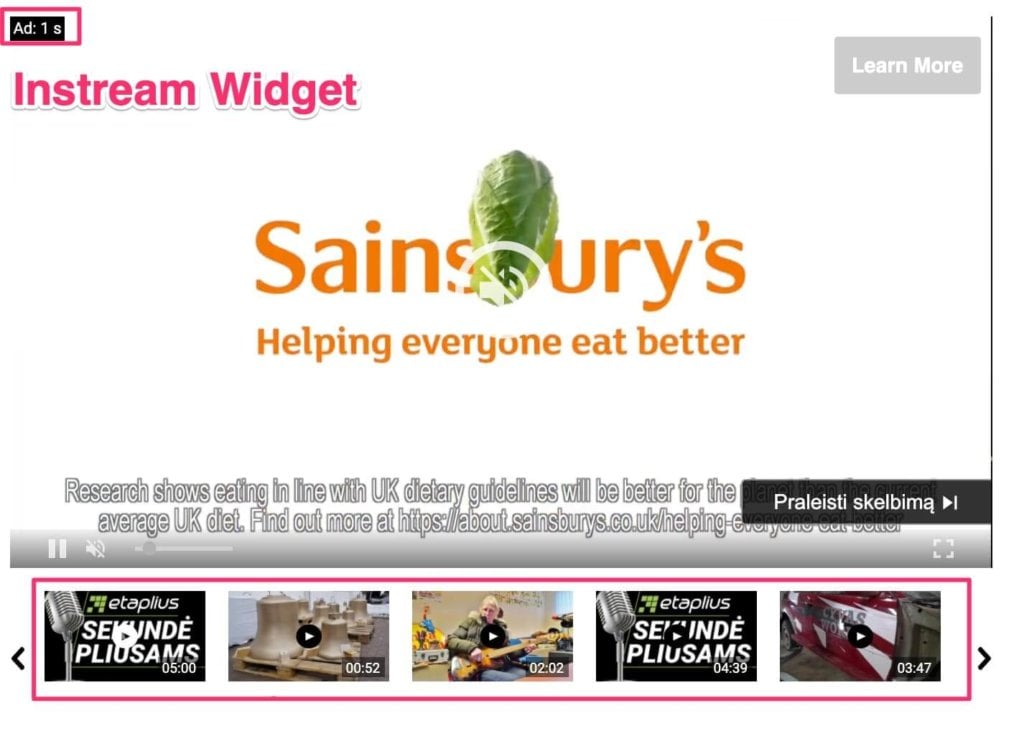
- Thanks to dynamic creative optimization (DCO), which automatically tailors ad content in real-time based on user data, display ads are much more personalized. For example, an e-commerce site might display an ad for a product that a user has recently viewed but not purchased, thus personalizing the whole experience.
- Retargeting, which follows users based on their previous browsing activity, remains effective using first-party data and other privacy-conscious methods like contextual targeting.
However, certain aspects of display advertising are becoming less effective or detrimental.
So, what’s not working?
- Banner blindness, where visitors instinctively ignore these ads, has significantly reduced banner ad effectiveness. Publishers that continue to rely heavily on static banners are likely to see declining engagement and ad revenue.
- Excessive display ads can slow down page loading times, disrupt the user experience, and lead to higher bounce rates. In fact, UX studies show that too many ads–especially those that interrupt content consumption–can decrease site credibility and push users to install ad blockers.
- Aggressive ad formats like pop-ups and, in some cases, interstitial ads are losing favor among both users and advertisers. These ad types often lead to high user frustration and are penalized by search engines like Google.
Advanced strategies for improving ad placement and revenue
Lazy loading
Lazy loading is an essential technique for improving both ad performance and user experience. This approach ensures ads are only loaded when they are about to be viewed by the user, optimizing page speed and reducing unnecessary load times.
Why use lazy loading?
- It significantly improves your ad viewability score, ensuring ads are seen by users.
- It increases page loading speed by an average of 6 to 8 milliseconds, which can greatly impact user retention.
- It reduces page latency, leading to a smoother browsing experience and lower bounce rates.
Header bidding
Header bidding is an advanced programmatic technology that allows you to sell your ad inventory for the highest possible price by offering it to multiple demand partners (like Google) simultaneously. However, building such a solution in-house can be unsustainable for most publishers because of its high development costs.
That’s why monetization platforms like Setupad offer instant access to this technology and help you scale your business goals.
If you’re seeking more control and flexibility over your ad operations, our advanced header bidding solution is the perfect fit!
Setupad Prebid Self-Serve is designed for publishers looking for a self-serve advertising platform with an intuitive interface. It seamlessly integrates with GAM, Google AdSense, and direct SSP accounts, allowing you to manage and optimize your ad performance easily.
With comprehensive control over your ad stack, Setupad empowers you to fine-tune your revenue generation strategies for maximum efficiency.

Programmatic advertising: automating ad revenue
Programmatic advertising automates the buying and selling of digital ad space, streamlining what used to be a manual process of negotiating, ordering, and setting up ads. This automation leverages AI and machine learning to enable RTB, where ad inventory is bought and sold instantly, without predefined prices or direct human involvement.
The result is faster, more efficient ad placements that better match advertisers to available inventory.
How do programmatic ads outperform conventional ad networks?
Programmatic advertising outperforms conventional ad networks by using data-driven decisions and RTB, ensuring that the right ad reaches the right user at the right time. Unlike traditional ad networks, which rely on fixed rates and manual processes, programmatic platforms optimize for relevance, increasing engagement and revenue.
Key components of the programmatic ecosystem:
- Demand-side platforms (DSPs) allow advertisers to bid on ad inventory across multiple platforms, ensuring that ads are served to targeted audiences (e.g., Criteo)
- Supply-side platforms (SSPs) help publishers manage and sell their ad inventory efficiently, allowing them to connect with multiple ad exchanges and demand partners (e.g., theTradeDesk)
- Data management platforms (DMPs) collect and organize data from various sources to enhance audience targeting and campaign effectiveness (e.g., Lotame )
- Ad exchanges are digital marketplaces where publishers and advertisers buy and sell ad inventory through real-time bidding (e.g., PubMatic)
Google AdSense
Google AdSense is one of the most popular ways to monetize a website with ads. Publishers agree to place ads on their websites and earn money each time someone clicks on them. The free, easy-to-use platform is suitable even for small publishers.
However, one of the main disadvantages of AdSense is that it doesn’t allow publishers to sell their ad space for the highest price. Moreover, Google takes a 32% cut of your ad revenue.
While AdSense can be a great starting place for new publishers, you might want to try more advanced monetization solutions once your website grows.
Setupad
Consistently creating content and maintaining a website is hard enough. Thus, partnering with a monetization platform like Setupad takes a massive load off publishers’ shoulders.
Why is Setupad the best website monetization choice for publishers and content creators?
Because with our solution, you’ll boost your ad revenue by at least 30%. In addition, you’ll have technical support from our experts, advice on choosing the best-performing ad placements and sizes, protection from malvertising, and recommendations tailored to your website.
Sounds great? We think so, too! Sign up to unlock all the benefits.
Native advertising for non-intrusive monetization
If you want to monetize your website with ads but fear that they may annoy your users, try the native ad format. Native ads blend effortlessly with the rest of your content and generally match the website’s look and feel. It’s the most user-friendly advertising type.
There are several native ad types, like in-feed units, promoted listings, paid search ads, recommendation widgets, and custom ads, so you’ll definitely find one that works for you.
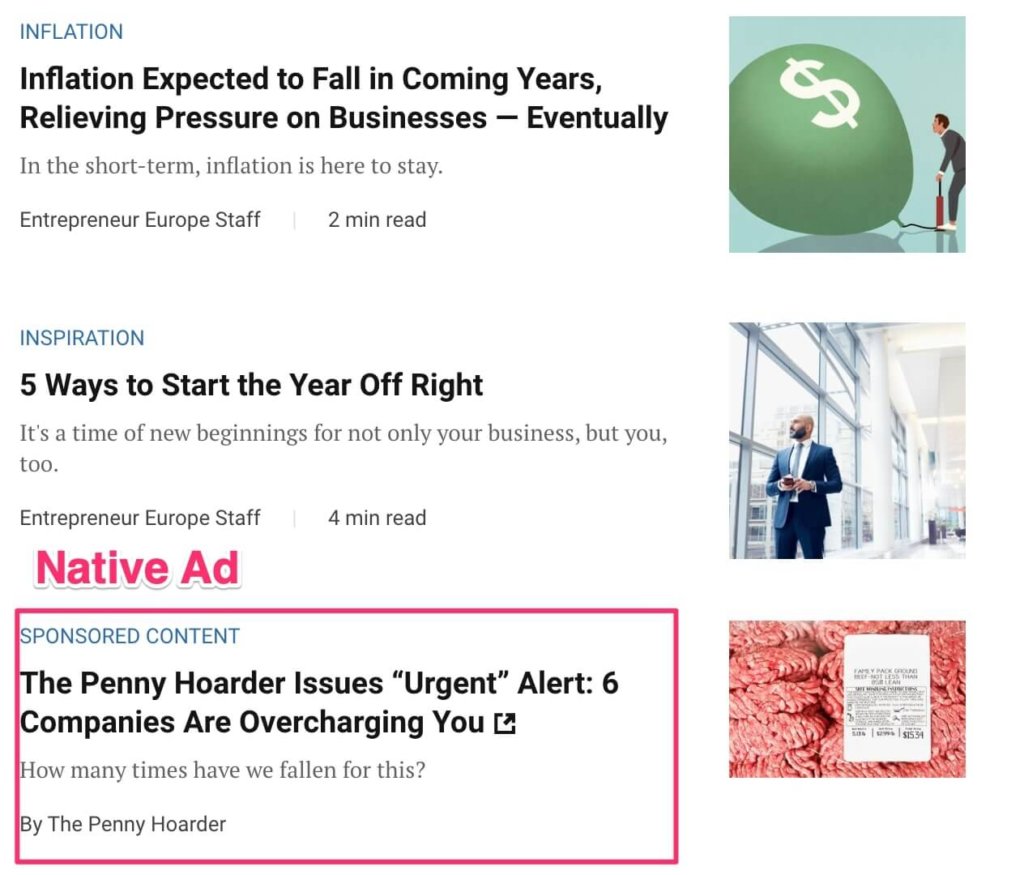
As native advertising grows, so does the need for transparency and trust. Ethical native advertising means prioritizing clear labeling and ensuring that users are aware when they are interacting with sponsored content.
To maintain ethical standards:
- Ensure all native ads are clearly labeled as sponsored or paid content.
- Be transparent about affiliations between advertisers and publishers.
- Encourage stakeholders across the ecosystem, including advertisers, SSPs, DSPs, and publishers, to maintain transparency and accountability.
Affiliate Marketing: Maximizing Revenue Through Strategic Partnerships
Traditional affiliate marketing
Affiliate marketing is one of the best ways to monetize a blog if you like to review products or services.
Affiliate marketing means you’ll earn a commission for every purchase your readers make using the affiliate links in your blog. You have to find a product that fits your blog.
For instance, if your website is about golf, you could earn a commission by including an affiliate link for golf club sets.
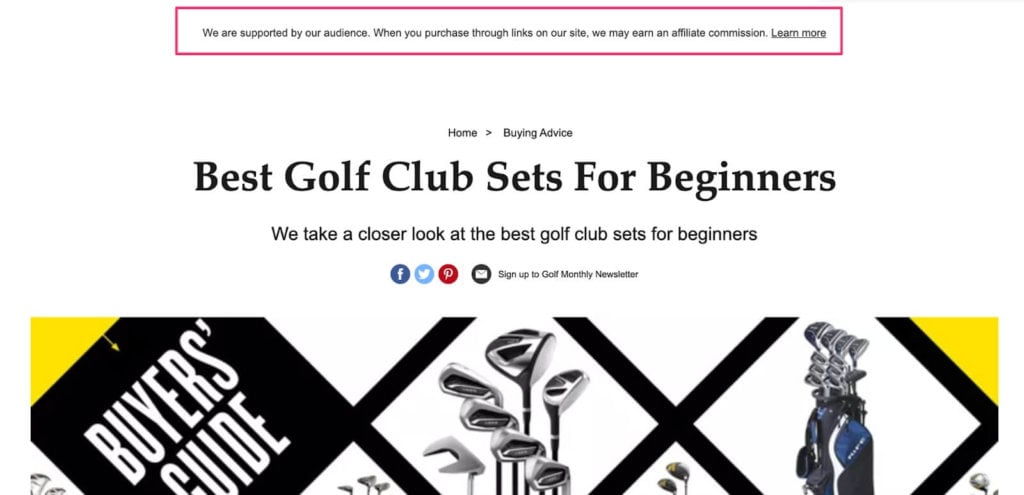
However, to succeed with this strategy, you need to:
- Be transparent with your audience and disclose all affiliate links and partnerships.
- Promote products that are relevant to your audience.
- Only include genuine reviews.
- Don’t promote too many products.
Here, you can read more about affiliate marketing.
Examples of affiliate programs for specific niches
To partner with an affiliate program the typical requirements include significant web traffic and quality content. Here we’ve gathered some niche-specific affiliate programs to help you grasp how large is the pool of opportunities for affiliate programs:
| Niche | Advertiser | Affiliate product | Commision rate |
| Make money online | Semrush | All in one SEO platform | $200 for every sale and $10 for every free trial |
| Finance | Personal Capital | Financial management tools | $100 per qualified lead |
| Travel | Expedia | Daily travel deals | Up to 4% |
| Fitness | Horizon Fitness | Home exercise | 8% |
| Personal development | Audible | Audio books | $15 for each trial membership |
| Fashion & lifestyle | Urban Outfitters | Lifestyle retailer | 15% commission for each sale |
| Real estate | Nolo | Legal books and software | 25% per sale |
| Technology | GoPro | Action cameras | 3% per sale |
| Food | Home Chef | Meal delivery service | n/a |
In case you want to partner up with a company that provides different types of affiliate programs, we got you! Here are the 5 of the most popular platforms for affiliate marketing:
- Amazon Associates. One of the largest and most accessible affiliate programs, Amazon Associates allows you to earn commissions by promoting and linking to Amazon products. It’s ideal for websites that review or recommend products.
- Digistore24. A global affiliate network focusing on digital products such as online courses, e-books, and software. It offers an easy-to-use interface and high commission rates.
- ShareASale. A comprehensive affiliate network offering a wide range of merchants across various industries. ShareASale provides tools for tracking, reporting, and optimizing your affiliate partnerships.
- CJ Affiliate (formerly Commission Junction). One of the oldest and most established affiliate platforms, CJ Affiliate connects publishers with premium advertisers. It’s known for its powerful tracking tools and wide selection of global brands.
- MyLead. A versatile platform offering affiliate programs across multiple verticals, including e-commerce, finance, and gaming. MyLead provides various monetization models like CPL, CPA, and CPS.
Sponsored Content
Traditional sponsored content
Another website monetization method is sponsored posts. They work similarly to an ad on your blog, for which you get paid. Sponsored posts can include many things, like:
- Product or service review on your website
- Product promotion on your social media
- Partner post in your email newsletter
- A post that includes a link to your partner’s website
Content creators usually employ this technique together with other monetization methods because too many sponsored posts may annoy your users. Importantly, you have to give an honest review. Otherwise, you can damage your reputation.
Note: sponsored posts have to be labeled as “sponsored” to let Google know that this is the case, so it doesn’t penalize you.
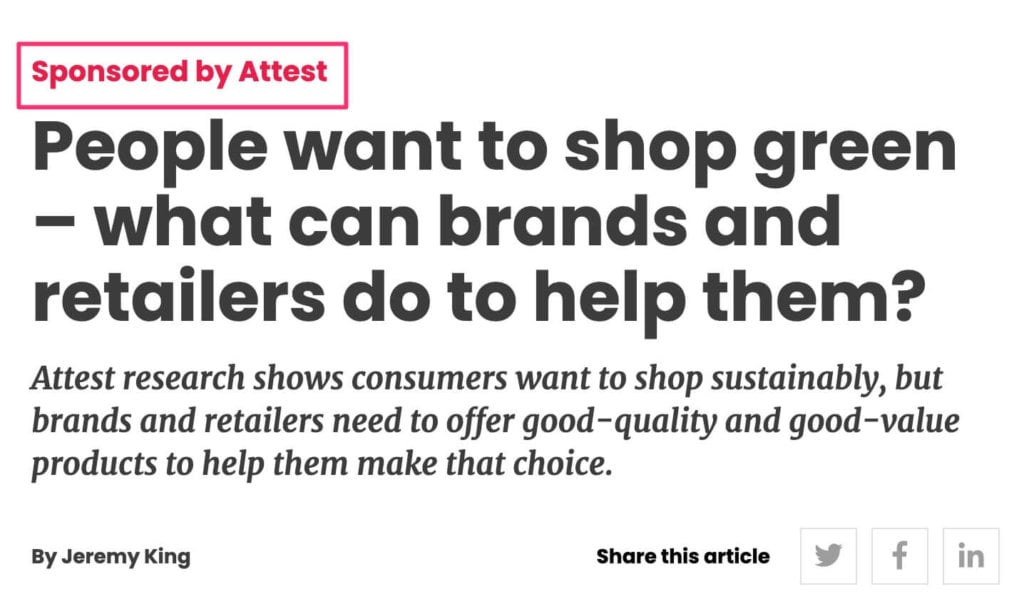
How to pitch brands for sponsored blog posts or product placements?
Legitimate collaborations involve brands reaching out because they see you as an influencer in their target market. They value your authentic opinion and your ability to connect with your audience.
The goal is to raise awareness and direct your readers to the brand, often with a link to their product or service. To find legitimate partnerships:
- Sign up on platforms like AspireIQ or TapInfluence, which connect influencers with brands.
- Pitch directly to brands you love, showcasing your proactive approach and genuine connection to their product.
Important–beware of red flags:
- Brands that offer pre-written posts and ask for do-follow links may be engaging in link-building schemes that violate Google’s rules, risking your SEO ranking.
- Avoid “advertorials” that don’t align with your content or audience, as they may erode trust with your readers.
Creating value-driven sponsored content that resonates with your audience
Focus on creating authentic, high-quality content that resonates with your audience while benefiting the brand. Instead of simply promoting a product for money, focus on weaving the brand’s message into your usual content in an informative, useful, or entertaining way to your readers.
When brands recognize that you can provide value without alienating your audience, they are more likely to offer long-term partnerships. This builds trust and can lead to:
- Long-term partnerships with brands
- Retainer deals for ongoing collaborations.
Retainer deals are another step up. Instead of one-off sponsored posts, brands might pay you a regular fee (monthly or quarterly) to consistently feature their products or services.
- Multi-channel sponsorships that include blog posts, podcasts, newsletters, and videos.
Digital Products: A High-Profit, Scalable Revenue Stream
Traditional digital products: e-books, courses, and templates
According to Elearning Statistics, the global e-learning market will reach $319 bln by 2029. Taking the changing digital climate, more and more people today prefer online education to the traditional classroom due to its flexibility and lower costs.
You could develop a helpful, well-structured e-learning website that will provide a steady monthly revenue stream. For example, CodeCademy offers a limited number of free coding courses and materials, with more advanced courses available on subscription.
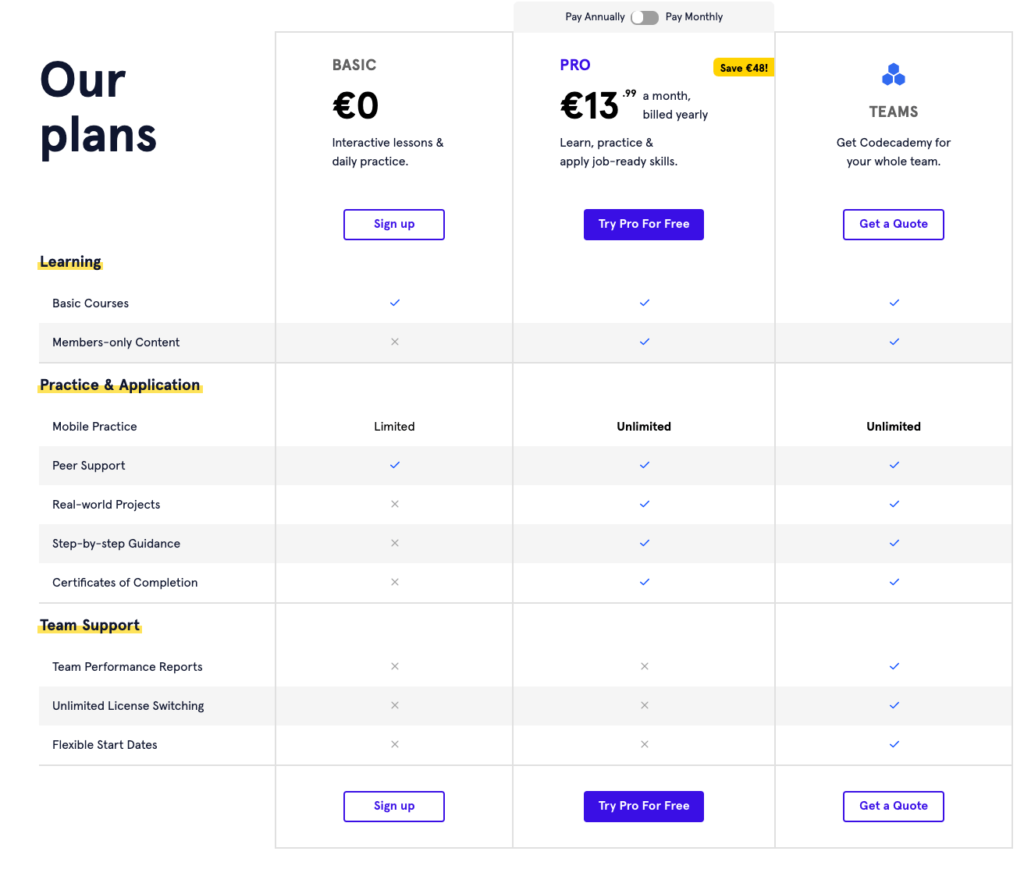
How to create and market digital products that your audience wants?
The key to successful digital products lies in understanding your audience’s pain points and needs.
Platforms like Gumroad, Podia, and Teachable make it simple to sell your digital content, but the first step is creating products that resonate with your audience. Focus on value, usability, and relevance to your niche.
Subscription-based digital products
Digital tools can be a great way to help with website monetization. Not only do they help you build a returning audience and grow your website traffic, but they can also help generate qualified leads and boost conversions for your other products or services.
Take an example from an SEO professional, Neil Patel. His keyword research tool, Ubersuggest, operates on a so-called freemium model (limited free features and full access on a subscription basis). This way, people try the product before paying for full access.
The trick here is to create a well-functioning tool relevant to your niche.
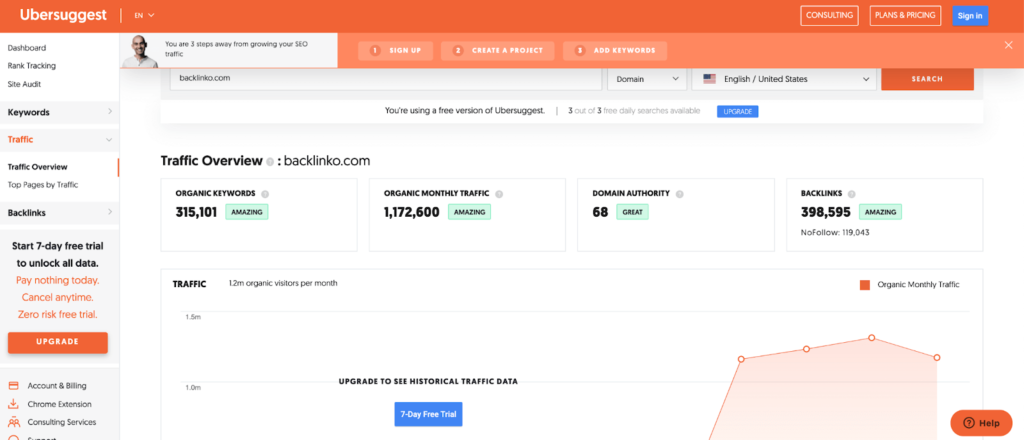
Subscription services can be built around templates, exclusive resources, or premium content that provides ongoing value to your audience. The recurring nature of subscriptions ensures consistent income while fostering loyalty and engagement.
Pre-selling digital products before launching
Before investing time and effort into creating a full-fledged product, test demand by pre-selling. This strategy allows you to gauge interest and validate your idea before committing resources.
Create an offer around your concept, and if there’s enough interest, proceed with the full product. This way, you reduce risk and increase your chances of success.
How do you use email marketing and landing pages for pre-launch sales?
Build hype by offering early access or exclusive discounts, and use targeted email campaigns to convert interested prospects into buyers. Your landing page should clearly communicate the value of your product, highlight key features, and include compelling CTAs to encourage sign-ups. For optimal results, consider partnering with an experienced email marketing agency to craft personalized campaigns that resonate with your audience and drive pre-launch engagement.
E-Commerce: Traditional and Low-Risk Models
Traditional e-commerce: setting up an online store
An eCommerce website is like an online shop where you can earn money from your custom products. And an eCommerce platform lets you set up an online shop to earn money from your products.
You can sell anything, but a digital product is probably the easiest (and least expensive). Setting up your store is also very easy, as you can hire a web developer from a professional web development company or register with a third-party website builder such as Shopify.
For example, you can sell:
- Templates
- Stock photos
- Logos
- Illustrations
- Photography presets
- E-books and e-magazines
- Website themes
- Online courses
- And much more
Envato Elements is a great place to sell your creative digital assets. A community of independent designers powers the site, and Envato shares 50% of the net revenue with its authors, which is a great scheme if you learn to start your online store or business.
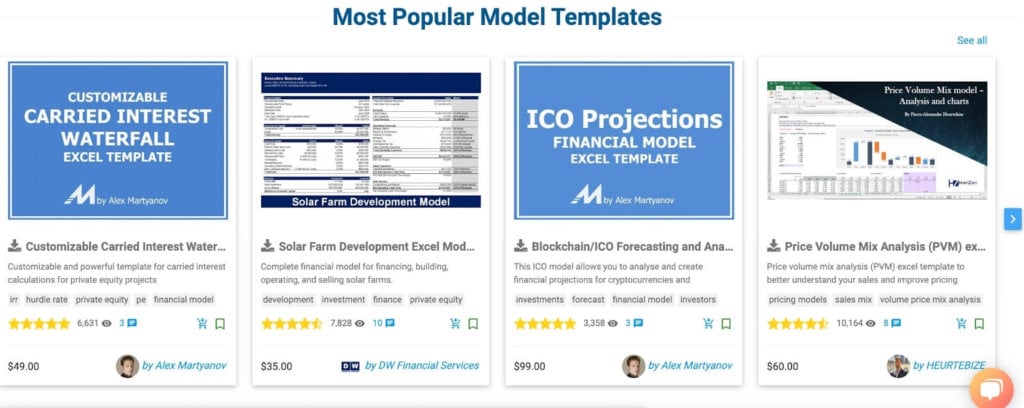
Learn more about eCommerce websites.
Choosing between WooCommerce, Shopify, or BigCommerce
Wondering how to choose between multiple e-commerce sites? We’ve got you!
- WooCommerce suits users familiar with WordPress. It offers flexible customization options and is a cost-effective choice for small businesses. WooCommerce is ideal for those with some technical knowledge or the ability to hire a developer.
- Shopify is known for its user-friendly interface and simplicity, Shopify is a fully hosted platform that handles everything from payments to security. It’s a great option for those who want a hassle-free setup and robust app integrations.
- BigCommerce is ideal for larger businesses or those looking to scale quickly, as it offers more advanced features and built-in SEO tools. It’s a powerful platform but may require more technical expertise to fully optimize.
Dropshipping and print-on-demand: selling without inventory
Dropshipping and print-on-demand allow you to sell products online without maintaining inventory. They’re ideal for entrepreneurs looking to get started quickly or minimize upfront costs, and both models enable you to offer a wide variety of products without the hassle of storing or shipping them.
Dropshipping allows you to sell products on your e-commerce site without handling inventory. When a customer places an order, the product is sent directly from the manufacturer or distributor to the customer. This hands-off approach saves time and operational costs, as you don’t need to manage stock or shipping logistics.
Print-on-demand (POD) is a specialized form of dropshipping where custom-designed products (like t-shirts, mugs, or posters) are only printed when an order is placed. This model eliminates the need for inventory, making it an ideal choice for graphic designers or artists looking to sell custom merchandise.
| Dropshipping | Print-on-demand | |
| Benefits | • Low upfront costs. You don’t need to invest in inventory or warehousing. • Flexible product offerings. You can offer various products from different suppliers without worrying about stock. • Easy to scale. As your business grows, dropshipping can scale without significant increases in overhead. | • No upfront inventory. Like dropshipping, POD allows you to sell products without holding stock. • Custom branding. You can add your own designs to a range of products, allowing for a unique and personalized shopping experience. • Low-risk testing. You can test new designs without financial risk, as items are only produced when sold. |
| Drawbacks | • Limited branding. Products are typically shipped in the supplier’s packaging, reducing opportunities to build brand identity. • Higher costs. Margins may be slimmer since you rely on suppliers to handle everything from production to shipping. • Less control over quality. Since you don’t handle the products, you have less control over product quality and delivery times. | • Limited product variety. You’re limited to products offered by your POD supplier, which may restrict your options. • Lower profit margins. The cost per item is higher since each product is custom-made upon order, which can cut into profits. • Longer shipping times. Production time can extend shipping times, which may affect customer satisfaction |
Crowdfunding Product Launches
Crowdfunding allows you to raise funds and gauge interest in your product before investing heavily in production. This model works well for unique or innovative products that require upfront capital to produce.
Thus, before fully committing to producing a product, you can use crowdfunding platforms like Kickstarter or Indiegogo to validate your product ideas.
So, how does crowdfunding actually help?
Crowdfunding helps you build an audience excited about your product before it even launches. If your product gains traction on a crowdfunding platform, it shows there’s demand. Additionally, backers pre-order your product, providing the funds you need to manufacture it.
Note: You can also use your website as a launch platform for exclusive deals to backers, offering them early access or limited-edition items to incentivize support.
Retail Media: A Growing Revenue Channel for Publishers
If publishers work with retail media it means they’re opening their inventory to place ads and promotions targeted at audiences with purchase intent. Publishers create content tailored to encourage purchasing decisions–product reviews, buying guides, and comparison articles–which seamlessly integrate retail ads or affiliate links.
This model has been growing rapidly as publishers increasingly work with retailers and brands to monetize their platforms by delivering highly relevant, product-driven content to consumers.
Additionally, retail media offers publishers a direct way to capitalize on the growing e-commerce market.
It’s no longer just about placing ads but curating a shopping experience within editorial content.
- For example, The New York Times’ Wirecutter operates as a product recommendation site, effectively becoming an e-commerce platform itself. This model blurs the lines between traditional media and e-commerce, allowing publishers to earn revenue through affiliate commissions or direct product sales.

Membership Sites: Combining Traditional Models with Unique Offers
Traditional membership sites: gated content and exclusive communities
Membership content is an excellent website monetization strategy. It’s similar to a paywall (we’ll get to that) but works best for websites that offer various types of content like reports, PDFs, webinars, e-books, courses, etc.
Essentially, you reserve some of your content (usually premium) for subscribed users while keeping the rest of the content free. You can also create several membership plans instead of just having one fixed price.

The paywall method includes restricting access to your content and asking visitors to pay for it.
You can employ a paywall to restrict access to your content altogether (hard paywall) or opt-in for a metered (soft) paywall to allow users to view a limited number of articles before encouraging them to subscribe.
Note: for this model to work, you must be an authoritative website in your niche with high-quality content.
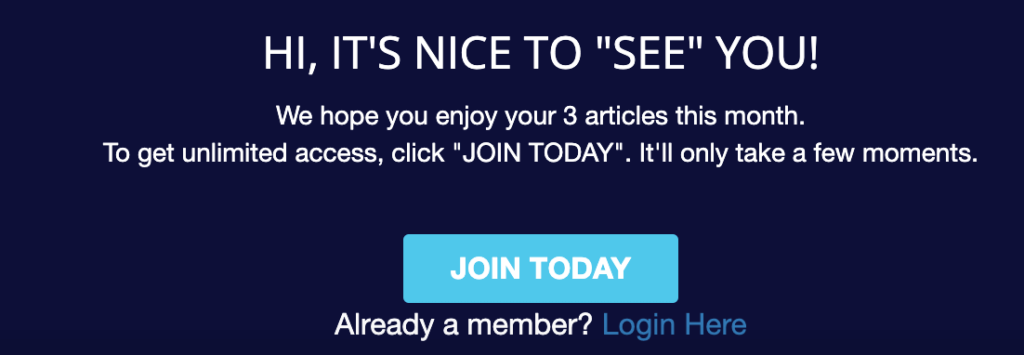
How to set up a membership site using tools like MemberPress, Substack, or Patreon?
- MemberPress–this WordPress plugin allows you to easily set up a membership site by offering gated content, courses, and membership plans. You can manage subscriptions, set up tiered pricing, and integrate payment gateways like Stripe or PayPal.
- Substack–primarily used for paid newsletters, Substack allows you to offer exclusive content directly to subscribers. It’s ideal for writers and creators who want a simple platform for delivering premium content via email.
- Patreon–this platform enables creators to offer tiered memberships, giving subscribers access to exclusive content, behind-the-scenes material, or live events. Patreon supports video, audio, and community-based content, making it highly versatile.
Offering exclusive content, courses, or live events to paid members
With these platforms, you can offer a wide range of exclusive material to members, including:
- Premium content (e.g., reports, articles, and newsletters.)
- Online courses (e.g., step-by-step guides or educational series).
- Live events (e.g., webinars, Q&A sessions, or interactive workshops.)
Micro-Membership Models
Micro-memberships focus on offering low-cost subscriptions for niche content or access to exclusive communities, like Slack groups or private forums. These models typically offer targeted, high-value content for a smaller, highly engaged audience.
Platforms like Slack or Discord are great for creating paid, private communities where members can interact and receive specialized advice or content.
Email Marketing as a Revenue Driver
Traditional email monetization: promoting products and affiliate links
The idea behind email lists is to build and extend an engaged email audience. Once you have a solid email list, you can include sponsored posts from your partners, affiliate links, or even up-sell your product and services.
What content should I put in my newsletter? Well, there’s no right or wrong way to do it, so use your imagination.
For example, you can ask visitors to provide their verified email addresses in exchange for your premium, more in-depth content like e-books or whitepapers. See the example from the Search Engine Journal below.
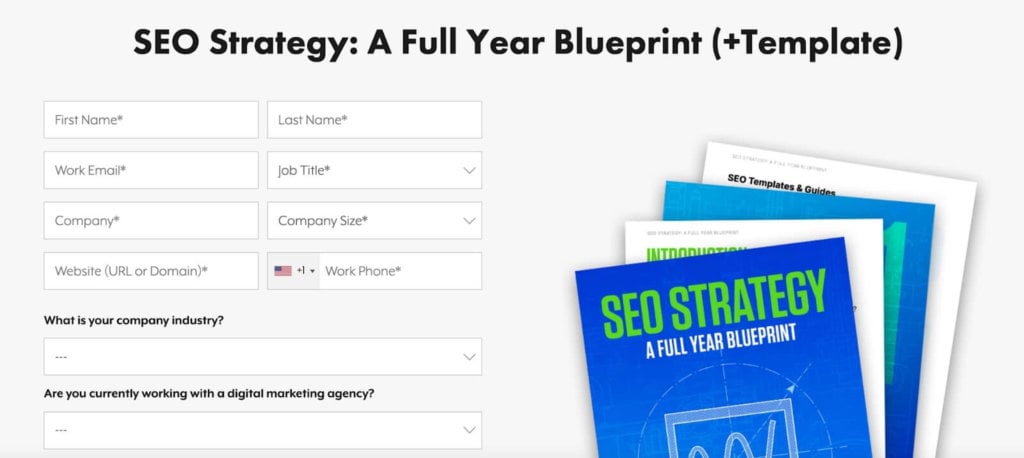
Monetizing Through Paid Newsletters
Paid newsletters are a growing trend in email monetization. By offering high-value content, such as in-depth analysis, industry insights, or exclusive reports, you can charge subscribers a monthly or yearly fee to access this content.
For example, Substack allows you to offer premium content through subscription-based models.
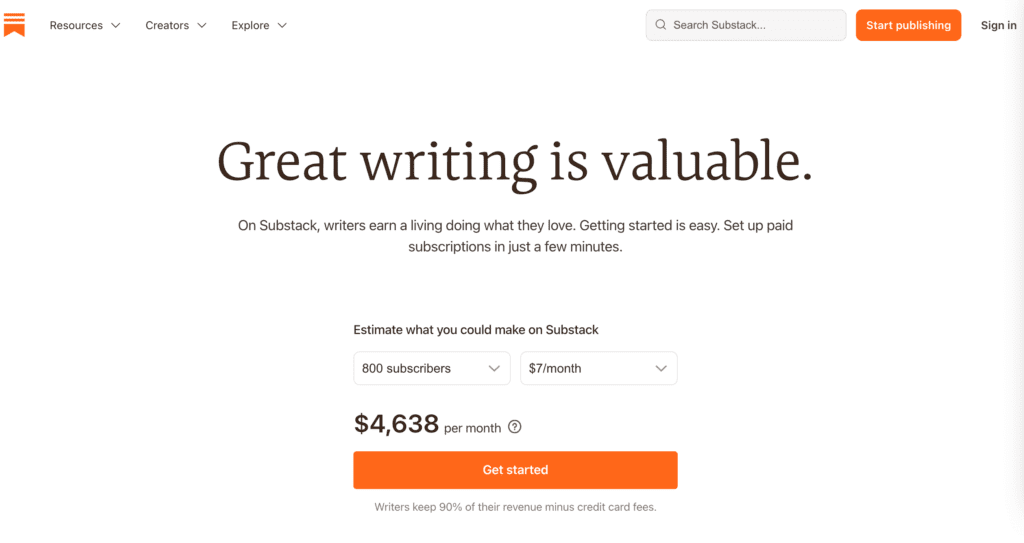
Running Paid Email Sponsorships
Another profitable strategy is running email sponsorships. With a large and engaged audience, you can charge brands to feature their products or services in your email newsletters.
The key is maintaining balance–ensure that sponsored content aligns with your audience’s interests and doesn’t overwhelm them with ads.
Donations: Monetizing Your Community’s Support
Accepting donations: platforms and strategies
Donations are the way to go if you wonder how to monetize a website without ads. Even if your website traffic isn’t large, but your audience is engaged, you can ask for a donation.
If your audience genuinely believes your content adds value to their lives, they’ll be happy to support your hard work. Many publishers and content creators monetize their websites exclusively through donations or even through a mix of donations, membership content, and ads.
The only thing you have to do is implement a donation button with tools like PayPal.
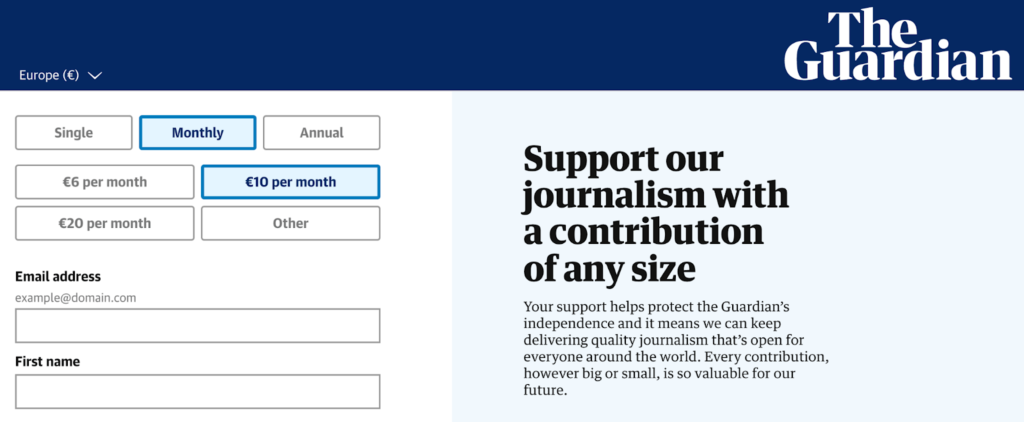
Platforms for user-supported monetization
Creators and publishers often supplement their income with donations, using them as a standalone revenue stream or in combination with ads, membership models, or premium content.
For example, many blogs, podcasts, and YouTube creators ask their audience to contribute directly to support ongoing production and content development.
Related article: How to Monetize YouTube Videos?
Several platforms are designed to help creators monetize through donations, often offering additional tools to engage their audience:
- Buy Me a Coffee: A lightweight platform for accepting one-time donations or recurring support. It’s simple to set up and perfect for creators looking for flexibility.
- Ko-fi: Similar to Buy Me a Coffee, Ko-fi allows you to accept donations without taking a cut of the earnings. It also offers options for monthly memberships and paid commissions.
How to incentivize donations with value-added content or perks?
To encourage more donations, offer value-added content or perks. This could include:
- Give access to bonus articles, behind-the-scenes content, or early access to new posts for those who contribute.
- Offer shout-outs, personalized thank you notes, or small rewards for larger donations.
- Provide entry to private groups, Q&A sessions, or direct interactions with you as a creator.
Consulting and Coaching: Selling Your Expertise
Traditional consulting and coaching models
Traditional consulting and coaching involve working one-on-one with clients to provide personalized advice, strategies, or training. These sessions typically take place over a set period and can be offered as hourly rates or longer-term packages.
Consulting focuses on providing expert advice and strategies tailored to a client’s business or personal challenges. Consultants are often hired to solve specific problems or optimize processes.
Coaching involves guiding individuals toward personal or professional goals through structured sessions, providing support, accountability, and actionable insights.
These models typically offer high return per client, but the limitation is that your income is tied directly to the number of hours you work.
Offering 1:1 services like consulting or coaching sessions via your website
Setting up a section on your website to offer consulting or coaching sessions is straightforward and scalable. To promote your services you can:
- Use tools like Calendly to allow clients to book time directly with you.
- Clearly outline what you offer, your expertise, and the outcomes clients can expect.
- Display success stories or feedback from past clients to build trust and credibility.
- Provide a brief introductory call to assess their needs and explain how you can help.
Scaling with group coaching and masterminds
As your demand grows, scaling your time becomes essential. One way to do this is by transitioning from one-on-one services to group coaching or mastermind programs. These models allow you to work with multiple clients simultaneously.
Group coaching involves leading a group of clients through a structured program focused on a specific topic. These sessions may be weekly or bi-weekly, allowing clients to share experiences, learn from each other, and benefit from your guidance.
Mastermind groups typically consist of a small, select group of individuals working together under your leadership. Masterminds focus on peer-to-peer learning, accountability, and collaboration, with the facilitator guiding the overall process. These groups often attract higher-paying clients due to the exclusivity and value offered.
Creating group programs or masterminds that deliver higher returns with less time commitment
Group programs and masterminds can deliver higher returns with less time commitment because you can serve multiple clients at once. To make these programs effective:
- Design a step-by-step program with set milestones and outcomes for participants.
- Encourage interaction and collaboration within the group to create a sense of community and shared learning.
Additionally, since group programs and masterminds offer immense value, you can charge a higher price for participation, making them a more scalable and profitable model than one-on-one sessions.
User-Generated Content (UGC): Turning Community Content into Revenue
Encouraging UGC for audience engagement
User-generated content (UGC) is a way to build deeper, more authentic connections with your audience. When you encourage your community to share their experiences and insights, you create a platform where your customers feel like active participants rather than passive consumers.
This sense of involvement strengthens loyalty and trust.
UGC allows your audience to become storytellers, brand advocates, and even partners in your brand’s growth. This way, you can bring more authenticity to your marketing.
For example, GoPro harnessed UGC to showcase the capabilities of its cameras by featuring breathtaking action shots captured by its users. This created a thriving community of adventure enthusiasts and significantly increased brand visibility, helping GoPro dominate the action camera market.
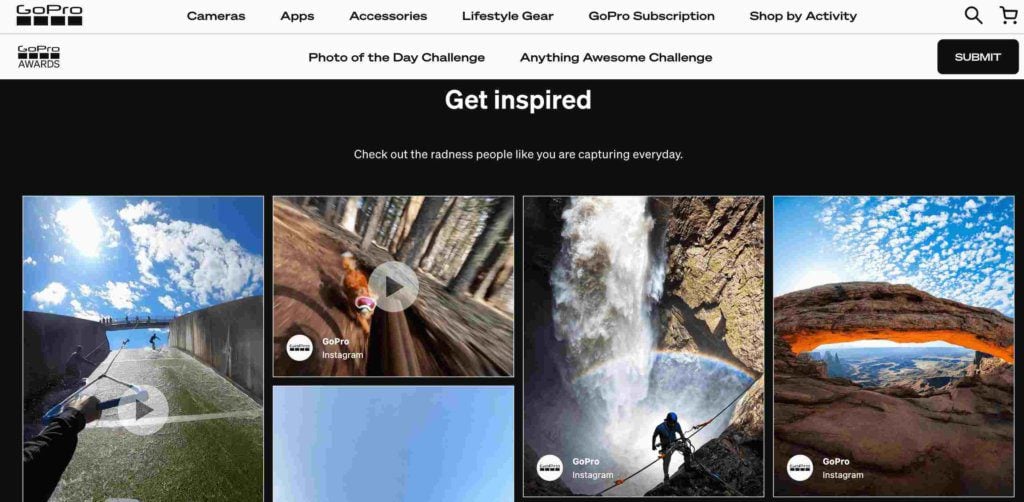
Source: GoPro
How to incentivize your audience to create content (reviews, testimonials, forum posts)?
To get your audience actively producing UGC, you need to motivate them. You can launch contests or challenges that encourage users to share content related to your brand, and offer rewards like discounts or free products.
Don’t forget to signal to your audience that their voices are valued!
Highlight the best user-created content on your website, social media channels, and other marketing materials. Additionally, engage with users by commenting on their posts, thanking them for their contributions, and sharing their stories.
Licensing and Syndication: Making Money by Selling Your Content
Licensing your content to other platforms
Licensing allows you to monetize your existing content by granting other platforms or businesses the right to use it. Through a content licensing agreement, you sell the usage rights to your content without giving up ownership.
- This legal contract between the rightsholder (you) and the company outlines how the content can be used and the associated fees.
Basically, a content licensing agreement is a contract that grants a third party the right to use your content under specific terms. This can include republishing articles, videos, or other media, and it typically outlines usage rights, licensing fees, and distribution methods.
Syndicating blog content, videos, or podcasts
Content syndication is the practice of sharing your content on third-party platforms to reach a broader or more targeted audience. Some popular syndication platforms include Medium, News Break, LinkedIn, and YouTube.
Syndicating content like blog posts, videos, or podcasts allows you to showcase your work to new audiences, potentially increasing traffic, engagement, and monetization opportunities.
For example, your podcast can be shared on platforms like YouTube, offering monetization through ads.
White-label content creation
White-label content refers to outsourcing content production and then reselling that content under your brand. This model is ideal for agencies or businesses that want to offer content services without hiring an in-house team.
White-label content creation is scalable and flexible, allowing you to adjust the volume of content production based on demand.
If you wonder, how does white-label content creation work–we got you.
You hire a content provider to create articles, blogs, or other materials. The content is delivered without the provider’s branding, allowing you to present it as your own work.
Then, you sell this content to your clients or publish it under your brand. That’s it!
Selling pre-made content to other site owners or businesses
Another monetization strategy is selling pre-made content to businesses or website owners (e.g., articles, templates, e-books, or research reports.)
Why should you sell pre-made content?
- Faster monetization–you can sell content immediately without having to create new material.
- Passive income–once created, content can be sold repeatedly to multiple buyers.
Added value–purchasers get professional content without needing to invest in their own writers or editors.
Website Flipping: Building and Selling for Profit
Building a website for resale
This strategy is a little different because it doesn’t exactly involve the monetization of a website–it involves selling it. Once you grow your website to a certain point, you might want to sell it and reap the returns. The price you can sell it for will depend on things like:
- Website niche
- Website traffic
- Monthly revenue
- Monetization model
- Search engine rankings
The challenge for flipping your website is to create it worthy enough so that people will actually want to buy it. To get a rough idea of how much you can sell your website for, explore Empire Flippers.
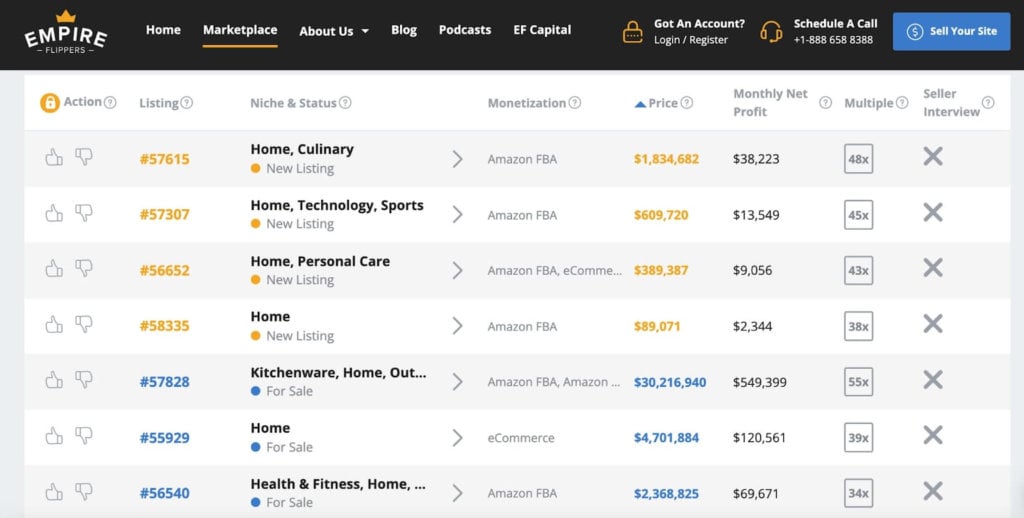
Monetizing with lead generation
Lead generation is similar to affiliate marketing. However, instead of receiving a piece of profit from every purchase made through an affiliate link, you generate leads for other businesses by utilizing an e-commerce landing page.
Through product reviews or comparisons, you can insert a link that will take a user to the e-commerce landing page of that business. If the user opts in for that business’ offer (or similar), this will count as a lead.
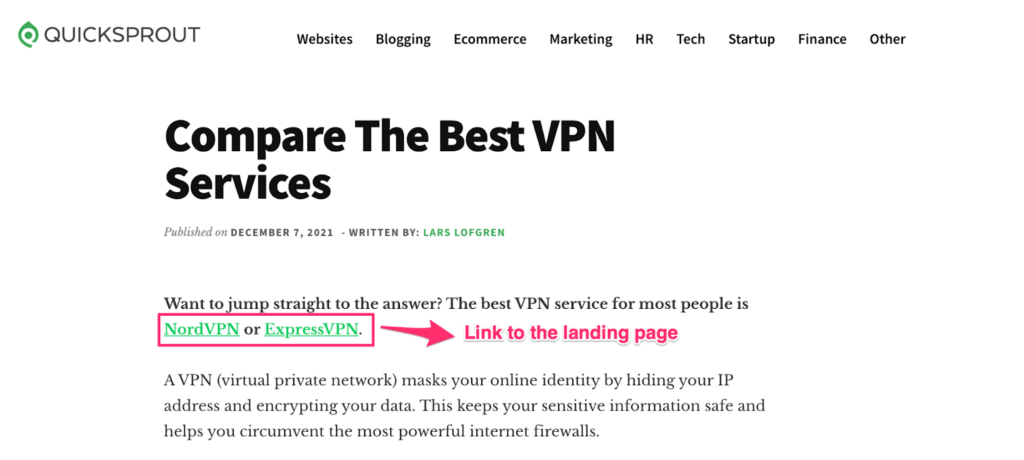
Scaling and Diversifying Your Monetization Efforts
Why shouldn’t you rely on one income stream?
Relying on a single source of revenue is risky. If that income stream is disrupted due to platform changes, algorithm updates, or policy shifts, your entire business could suffer.
By diversifying your income streams, you create a safety net, ensuring financial stability even if one revenue channel is compromised.
Diversifying revenue to protect against platform changes
Platforms frequently change their algorithms or policies, affecting traffic and ad revenue.
For instance, a Google update can significantly impact your site’s search rankings. By spreading your monetization efforts across different streams–such as ads, affiliate marketing, digital products, and services–you safeguard your business against these fluctuations.
Experimenting with new monetization methods
Constantly experimenting with new monetization methods keeps your business adaptive and innovative. Let’s recap what we talked about before. Here are some of the monetization method examples you can try to implement:
- Subscription models for exclusive content or memberships.
- Crowdfunding or donation platforms like Patreon for audience support.
- Licensing and syndication of your content to third-party platforms.
Remember, as your website grows, managing all aspects of your business becomes more challenging.
To scale efficiently, consider working with freelancers or outsourcing key tasks:
- Guest writers–bring in experts or freelancers to produce content, helping you maintain a steady publishing schedule.
- Web developers–hire professionals to optimize your website’s performance, user experience, and technical maintenance.
- Ad operations–outsource ad management to a trusted monetization company like Setupad, allowing experts to maximize your ad revenue while you focus on content creation and strategy.
Conclusion
One of the first rules for website monetization is always thinking about your users. Remember, your website audience is your biggest asset. None of the monetization strategies mentioned in this post will work if you don’t apply them with user experience in mind.
All you want to do now is invest time and test different techniques to see what works. However, if you decide to monetize your site with ads, trust Setupad to do the job! Sign up today.
FAQs
What’s the Fastest Way to Monetize a New Website?
Affiliate marketing and selling digital products are quick ways to start monetizing a new website, as they require minimal setup and can generate income even with low traffic.
How Much Traffic Do I Need to Start Making Money?
You can start monetizing with any level of traffic, but to generate meaningful revenue from ads or affiliate marketing, it’s recommended to have at least 1,000 monthly visitors.
Is Affiliate Marketing Still Profitable in 2025?
Yes, affiliate marketing remains profitable in 2025, especially with niche-focused websites that provide valuable, relevant content and targeted product recommendations.
Can I Make Money with a Website Without Ads?
Yes, you can monetize a website through methods like affiliate marketing, selling digital products, offering services, or accepting donations without relying on ads.
How Do I Avoid Monetization Burnout and Ad Overload?
Diversify your income streams and balance your content-to-ad ratio to maintain user experience, while experimenting with less intrusive methods like affiliate marketing or membership models.


